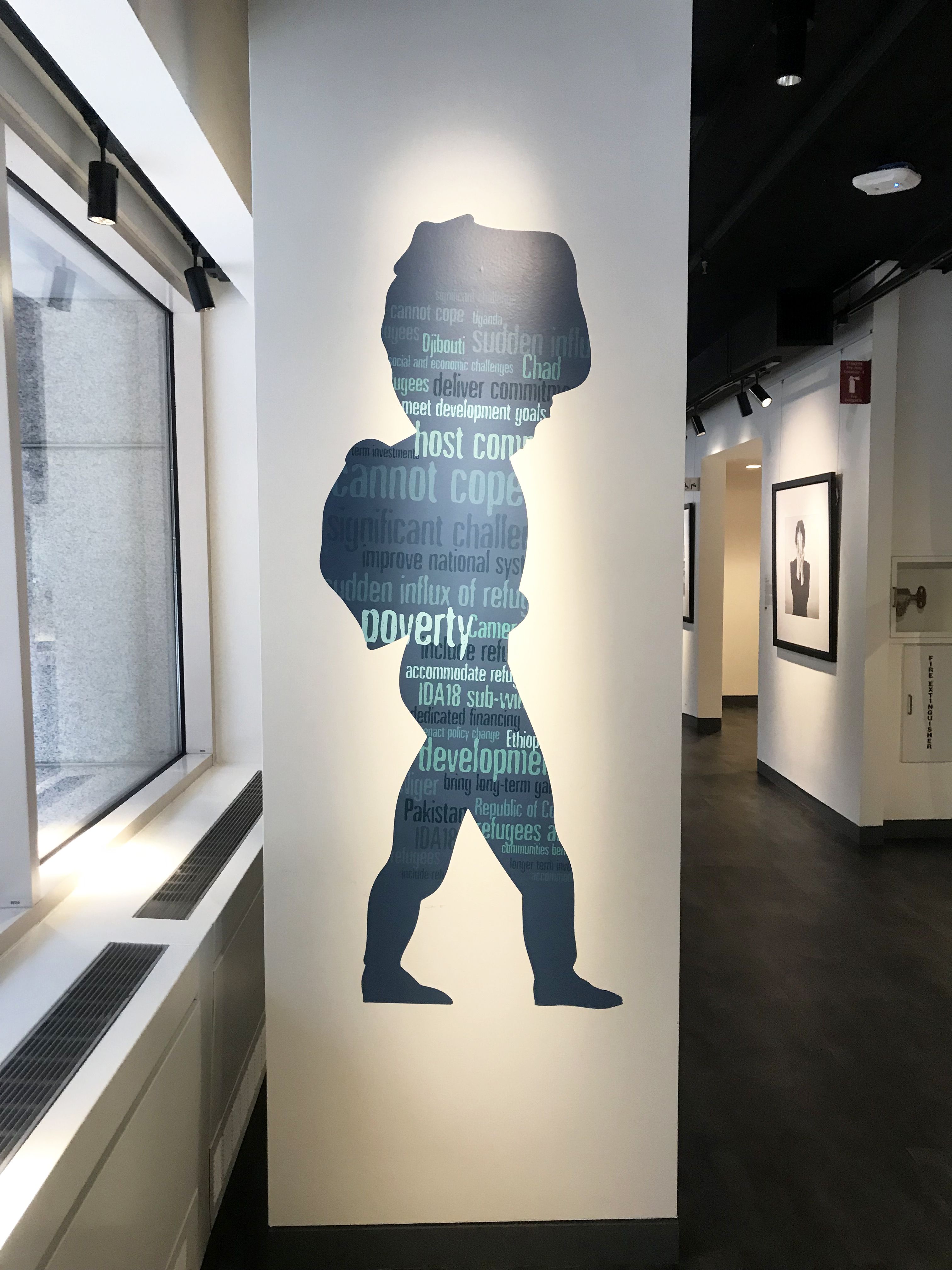The World Bank Group’s Visitor Center in Washington, D.C., unveiled its new exhibition “Uprooted: The Resilience of Refugees and Internally Displaced People and Host Communities” on Oct. 29. The exhibit, curated by the World Bank Art Program, includes several different mediums of art, such as painting, sculpture and video.
“Uprooted” is an initiative to support local artists and refugees in the U.S., and around the world. The art gallery showcases works by refugee artists who currently live in Washington, D.C. It features the work of well known international artists like Tammam Azzam and Qais Al-Sindy as well.
One of the most striking details of “Uprooted” upon first entrance is the expert use of color. Fleeing home as a result of danger, violence or economic instability is draining and damaging. However, the incredible, bright colors presented to viewers upon first glance is an exciting surprise.
Some works are dark sketches and silhouettes of gray and black hues, while other paintings include vivid reds, oranges, yellows and pinks. Some pieces use color as a point of contrast, such as a blue ocean under a dark gray sky. Others seem to make color the focus of their work.
[Read more: “Glances From Infinity” showcases the diversity of UMD faculty work]
With such a serious, emotional and even deadly topic, it’s easy to wonder why the artists whose works are on display invoke cheer with brightly-colored visuals. Perhaps it’s to show that many victims of unfavorable situations possess incredible positivity. Maybe it’s to attract attention to the plight of refugees, a problem overlooked by many.
One of the most striking works of “Uprooted” is a sculpture by Azzam, a Syrian artist, titled Syrian Spring. The large, dark grenade structure is almost entirely covered by small, vividly colored flowers. This incredible contrast makes Syrian Spring undeniably a standout piece.
U.S.-based cinematographer and filmmaker Jonathan Kloberdanz’s work Syrian Voices is also featured in “Uprooted.” The short clips show Syrian refugees waiting in different parts of the world to be accepted into other countries.
In Kloberdanz’s work, many refugees share where they would like to relocate to the most. While some answer that they dream of living in Germany or Spain, no one says the United States. While America is not a part of the program that accepts these refugees, Kloberdanz demonstrates a fact that many may be shocked by: Not all refugees dream of coming to America.
It feels impossible to analyze all of the works in “Uprooted” without being reminded of some volatile political discourse. Despite the tumultuous time that “Uprooted” is being unveiled during and the contemporary controversies surrounding immigration in the U.S., the World Bank Group intends to say neutral.
According to Jessica Zhang, docent and consultant for the World Bank Group, the art gallery “tr[ies] to stay away from any political issues.” However, Zhang did acknowledge that the art is still “based on your interpretations.”
[Read more: ‘Pulse’ at the Hirshhorn Museum is tech meets art done right]
As a whole, the organization simply intends to provide the “most recent, most accurate info,” she said.
To say that the intentions of this exhibition are admirable is an understatement. The maturity in its presentation are unusual in the present day, but much needed.
It was decided that the newest exhibition would focus on refugees after the 2018 Spring Meetings, an annual meeting between the International Monetary Fund and the World Bank Group. The overall goal of the World Bank Group is to eliminate poverty, and it would be impossible to do that without addressing the refugee crisis.
“Uprooted” reminds us that it is impossible to fix global problems like poverty without considering the well-being of all 66 million people who inhabit the planet as refugees or internally displaced people.
3/4 Shells.



